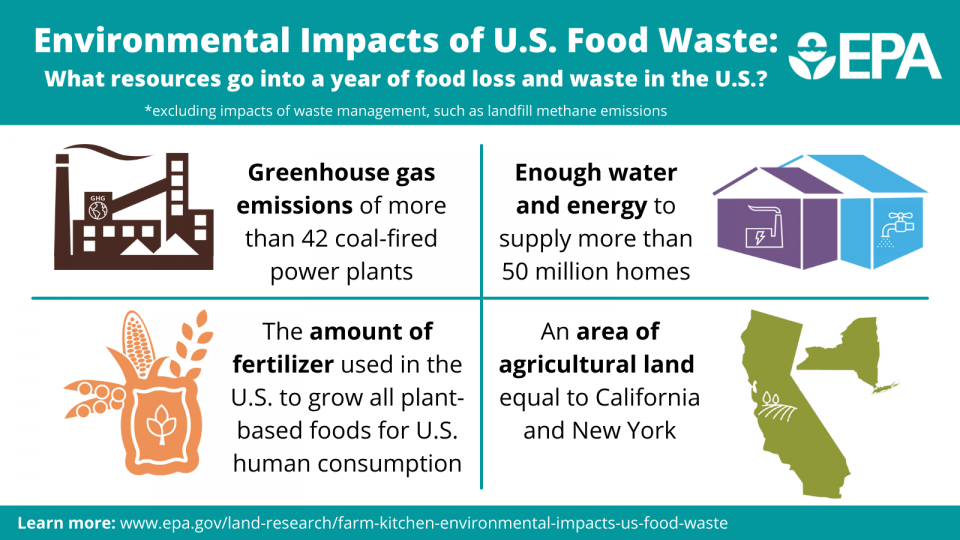Blog Post 3: The Environmental Impact of My Meal
Blog Post 3: The Environmental Impact of My Meal
I try to eat a salad every day, so I decided to choose a basic, meatless salad for my meal to use for this project. I try to stay away from most meats and dairy, especially red meat, due to health concerns and environmental impacts, so after doing more research on environmental impacts from fresh produce I was shocked to have found what I did! The most shocking infromation to me was that vegetarians actually cause more greenhouse gas emmisons than meat eaters. When I started digging more into this topic, I decided to use lettuce, tomato and other vegetables for the main ingredients of my consumer item. While locally grown produce does reduce carbon emissions from burning fossil fuels and reduces fossil fuel imputs by using less plastic packaging to get it from the garden to the stores shelves themself, this isn't always the case for Wisconsin veggie eaters due to our season changes. According to an article by Scientific America, "A new study by researchers at Carnegie Mellon University found that if Americans were to switch their diets to fall in line with the Agriculture Department's 2010 dietary recommendations, it would result in a 38 percent increase in energy use, 10 percent bump in water use and a 6 percent increase in greenhouse gas emissions." Especially when looking at the production of lettuce, it produces three times more greenhouse gas emissions that pork products such as bacon. Lettuce is also difficult to grow, harvest and transport. It tends to require a lot of pesticides and chemicals in the gardens, leaving the soil and ecosystems to be stripped after a long harvesting season, and take a lot of transportation because most of Wisconsins' lettuce is grown and brought from California. Scientists found that fruits and veggies have the largest water and energy footprint per calorie. In simpler terms, people have to consume more of that product to obtain the amount of calories they actually need. Plus, most food waste tends to be fruits and vegetables due to its short shelf life, with the exception of onions, broccoli and a few others that actually have decent environmental footprints. The top two vegetables that require the most water per pound to grow were actually the two vegetables I chose to look into: tomato at twenty-six gallons per pound and lettuce at twenty-eight.
When looking more at the chemical and fossil fuel aspect of pruducing these items, I found that the production of chemicals and fertilizers for the produce in our salads are the biggest culrprit of fossil fuel usage in industrial farming. In fact, more than 40% of energy used in the food system is put towards the production of man-made or artificial fertilizers and pesticides. Due to these fertilizers and pesticides, many rivers, groundwater, lakes and other sources of water are found to have these chemicals polluting them causing algal blooms and killing marine life. As well as, they contribute to nitrogen pollution which is a big issue for the ecosystems health and climate change. Most impacts caused by the production of vegetables are actually global due to the climate impact, water use, and waste but there are also ways in which these impacts are local. Some of the biggest local impacts being high input cost and the lack of knowledge farmers have on managing a safe and proper use of pestiscides in their community. Plus, in Wisconsin specifically, agricultural run off reduces the water quality in our lakes, streams and rivers and even in groundwaters making it unsafe to drink and use in some communities. As mentioned before, there are also many environmental impacts that are associated with the transportation, distribution and consumption of produce, especially due to the fact that most of Wisconsins produce, besides potatoes, carrots and corn, are grown out of state in warmer climates and more soil prosperous states. Due to Wisconsins seasonality issue, transportation from where the produce is grown to our shelves contributes a major footprint including a lot of carbon emissions and plastic use, which also contributes to pollution.
When trying to trace back how my meal got to me, its most likely that it was shipped from Califorina to Wisconsin in crates with holes in them. From there, the lettuce and other produce was distributed to restaurants and grocery stores throughout Wisconsin. Most likely the lettuce and tomato traveled the furthest to get to me due to the fact that Wisconsin farmers cant produce it year round and the carrots and dairy products such as cheese, if used on ones salad, most likely was local due to the mass amounts of dairy farms and corn and carrot fields we have. On top of it all, there is also a lot of waste than comes along with the produce. From single use plastics used to package the products, the produce itself spoiling while transporting, and the short shelf life causing a lot of the produce together thrown away, there is a lot of waste that comes with it as well.
Photo depictions of environmental impacts from vegetable produce:


External Sources:
https://www.scientificamerican.com/article/lettuce-produces-more-greenhouse-gas-emissions-than-bacon-does/
https://dnr.wisconsin.gov/topic/Nonpoint/AgEnviromentalImpact.html
https://www.miraclegro.com/en-us/library/edible-gardening/growing-lettuce
https://link.springer.com/article/10.1007/s11367-015-1019-z
https://usatruckloadshipping.com/how-is-lettuce-shipped/
Comments
Post a Comment